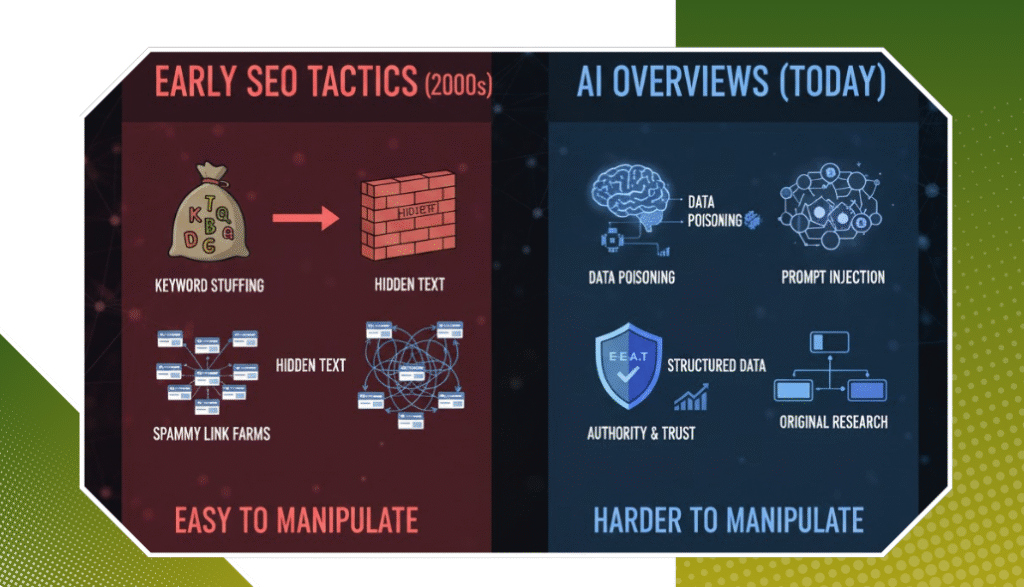As these AI-driven snippets become more prominent, it’s no longer enough to simply rank on page one. The game has changed. In this blog, we’ll explore how AI Overviews are impacting affiliate strategies and product review content, and what marketers must do to stay competitive.
What Are AI Overviews Exactly?
AI Overviews are Google’s AI-generated responses that synthesize content from multiple web sources to provide users with quick, summary-style answers to their queries. Unlike featured snippets that pull from a single source, these summaries draw on a wider range of content, citing various pages in a conversational format.
For example, if someone searches for “best home office chairs under $200,” instead of listing articles, Google may present an AI Overview summarizing the top-rated chairs, along with sources in small text links. This instantly impacts how users interact with search results and where they click.
Google explains that these overviews aim to “help people quickly understand a topic by providing a synthesized answer from across the web” (Google Search Central, 2024). While the goal is user convenience, it presents new challenges for affiliate content and product-focused websites.
Impact on Affiliate SEO and Product Review Sites
The introduction of AI Overviews has led to a tangible reduction in visibility for traditional organic listings. According to a study by Authoritas (2024), the average click-through rate (CTR) for the top organic result dropped by 18% in queries that include AI Overviews. This means that even if your content is ranking high, it may still be getting buried under AI-generated summaries.
For affiliate marketers, this shift translates to lost traffic and fewer conversions. Users are increasingly finding answers without ever clicking on a website. In affiliate-heavy verticals like tech gadgets, wellness products, and consumer electronics, this is especially disruptive, as product reviews are the core of traffic and monetization strategies.
Moreover, AI Overviews often surface answers without deep nuance or personalisation, undermining the value of long-form content, hands-on product comparisons, or expert insights.
Changes in User Search Behavior
AI Overviews have accelerated the rise of zero-click searches, where users obtain their answers directly on the search page without needing to visit external sites. A Semrush report (2023) already indicated that over 57% of mobile searches were zero-click, and this number is climbing rapidly with AI Overviews in play.
For marketers and SEO professionals, this means a fundamental shift in user expectations:
- Speed > Depth: Users want answers instantly, not a 2000-word breakdown.
- Summaries > Explorations: AI now does the comparison work for them.
- Authority > Quantity: Being cited in the AI Overview matters more than publishing dozens of posts.
Challenges for Affiliate Marketers
Affiliate marketers now face multiple hurdles due to AI Overviews:
- Decreased Ranking Leverage: Ranking #1 no longer guarantees top visibility when the AI Overview takes precedence.
- Dilution of Originality: AI tends to average out content, often lifting generic information that may ignore newer or more insightful posts.
- Disrupted Monetization Funnel: The user may never see affiliate links or CTAs if they never click through.
This creates an urgent need for affiliates to reevaluate how they position content. Simply offering “Top 10” lists or basic feature comparisons won’t suffice anymore. Content needs to offer unique value, deeper context, or proprietary insight to stand a chance at being cited, or clicked.
New Affiliate Strategies in the Age of AI Overviews
To stay ahead, affiliate marketers must move beyond old tactics and adopt strategies that make their content AI-citation-worthy and genuinely user-centric.
- Prioritize Unique Use Cases: Include original experiences, test results, or niche-specific performance analysis that AI can’t replicate.
- Diversify Content Formats: AI struggles to summarize videos, custom visuals, interactive polls, and embedded tools. These elements can boost user engagement and help differentiate your content.
- Focus on EEAT Signals: Google continues to emphasize Experience, Expertise, Authoritativeness, and Trustworthiness (EEAT). Use real author bios, expert reviews, and cited credentials to signal content quality.
- Direct Relationship Channels: Build email lists, communities, and social channels to reduce dependency on Google alone for traffic.
How to Optimize Product Reviews for AI Context
If you run a product review site, optimizing for AI Overviews means presenting structured, transparent, and user-first content. Here’s how to start:
- Use Clear Structure: Use H2s, H3s, and bullet points to clearly mark product pros/cons, features, and pricing.
- Add Schema Markup: Use Product, Review, and How-To schema to help Google understand and extract your data.
- Insert First-Person Language: Statements like “I tested this product for two weeks…” or “In our side-by-side comparison…” reinforce real-world experience that AI tends to value more.
- Provide Visual Data: Use comparison tables, charts, and infographics to distill complex data, especially for buyers scanning results.
- Include FAQs: Addressing common buyer questions within your reviews can improve dwell time and increase your chances of being referenced in Google AI Overview outputs.
Remember: The goal is to create product reviews that AI can trust, cite, and summarize, but not fully replace.
The Role of Brand Authority & Site Trust
Google’s AI Overviews tend to pull information from high-authority sources. This includes websites with strong backlink profiles, clear authorship, and positive user signals. To increase your chances of citation:
- Build Topical Authority: Cover related topics within a niche to signal expertise.
- Optimize UX and Core Web Vitals: Fast-loading, mobile-friendly sites are favored in rankings and by AI.
- Gain Authoritative Mentions: Secure mentions or links from reputed sources in your industry.
These long-term efforts contribute to overall site trust, which in turn boosts both AI citations and organic rankings.
Tools & Analytics to Track AI Impact
Monitoring performance in an AI-influenced search landscape is crucial. Here are some tools and tactics:
- Google Search Console: Track impressions and clicks for key queries, note any changes after AI Overviews were introduced.
- SERP Simulators: Tools like AlsoAsked and Thruuu can simulate AI-driven result structures.
- SEO Suites: Platforms like Ahrefs and Semrush now include SERP features tracking, helping you spot AI Overview appearances.
- Behavior Analytics: Use tools like Hotjar or Microsoft Clarity to observe how user interaction changes post-AI Overview rollout.
Conclusion
As AI Overviews continue to reshape Google Search, affiliate marketers and product review sites must evolve. Relying solely on traditional SEO and affiliate content formats will no longer cut it. Instead, marketers must focus on trust, originality, and structured value that both AI and human readers can appreciate. This isn’t the end of affiliate marketing, it’s the start of a smarter, AI-aligned era. Adapting early will define who thrives in this new ecosystem.




